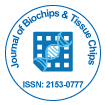Review Article
Current Applications of Tissue Engineering in Biomedicine
| Cristina Castells-Sala, Mireia Alemany-Ribes, Teresa Fernández-Muiños, Lourdes Recha-Sancho, Patricia López-Chicón, Caterina Aloy- Reverté, Javier Caballero-Camino, Alejandro Márquez-Gil and Carlos E Semino* | |
| IQS School of Engineering, Ramon Llull University, Via Augusta 390, 08017 Barcelona, Spain | |
| Corresponding Author : | Carlos E Semino IQS School of Engineering, Ramon Llull University Via Augusta 390, 08017 Barcelona, Spain E-mail: carlos.semino@iqs.url.edu |
| Received May 06, 2013; Accepted August 20, 2013; Published August 22, 2013 | |
| Citation: Castells-Sala C, Alemany-Ribes M, Fernandez-Muiños T, Recha-Sancho L, Lopez-Chicon P et al. (2013) Current Applications of Tissue Engineering in Biomedicine. J Biochip Tissue chip S2:004. doi:10.4172/2153-0777.S2-004 | |
| Copyright: © 2013 Castells-Sala C, et al. This is an open-access article distributed under the terms of the Creative Commons Attribution License, which permits unrestricted use, distribution, and reproduction in any medium, provided the original author and source are credited. | |
Abstract
Tissue Engineering (TE) is a scientific field mainly focused on the development of tissue and organ substitutes by controlling biological, biophysical and/or biomechanical parameters in the laboratory. The result corresponds, in most cases, to the elaboration of three-dimensional cellular constructs with properties more similar to natural tissues than classical monolayer cultures. These systems enable the in vitro study of human physiology and physiopathology more accurately, while providing a set of biomedical tools with potential applicability in toxicology, medical devices, tissue replacement, repair and regeneration. To succeed in these purposes, TE uses nature as an inspiration source for the generation of extracellular matrix analogues (scaffolds), either from natural or synthetic origin as well as bioreactors and bio-devices to mimic natural physiological conditions of particular tissues. These scaffolds embed cells in a threedimensional milieu that display signals critical for the determination of cellular fate, in terms of proliferation, differentiation and migration, among others. The aim of this review is to analyze the state of the art of TE and some of its application fields: bone, cartilage, heart, pancreas, vascular and cancer.

 Spanish
Spanish  Chinese
Chinese  Russian
Russian  German
German  French
French  Japanese
Japanese  Portuguese
Portuguese  Hindi
Hindi